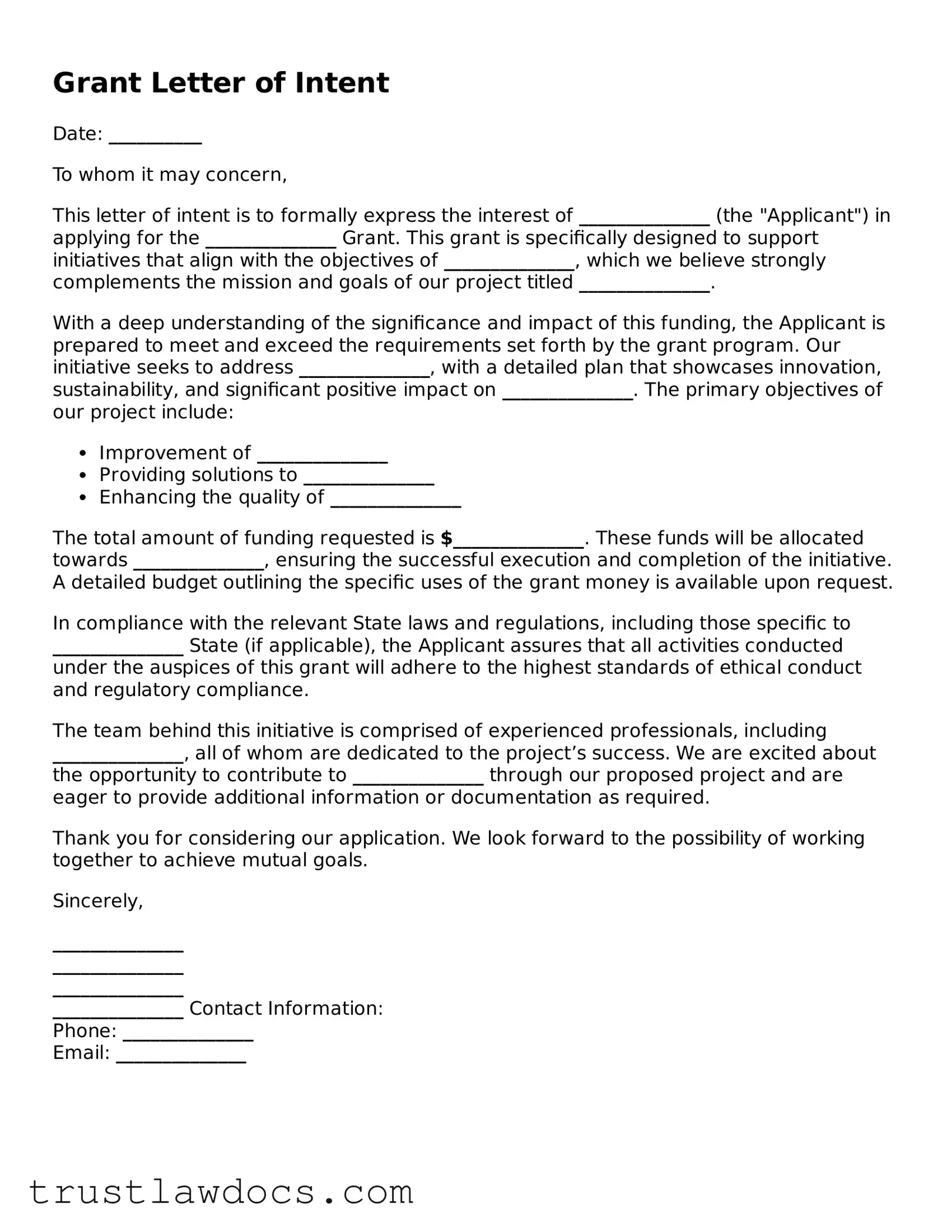What is a Grant Letter of Intent?
A Grant Letter of Intent is a document that applicants use to express their interest in securing a grant before submitting a full proposal. It outlines the project's goals, significance, and how it aligns with the grantor's mission. This initial communication can help both the applicant and the granting organization determine if there's a good fit before time and resources are invested in a detailed application.
When should I submit a Grant Letter of Intent?
The submission of a Grant Letter of Intent typically precedes the full grant application process. It's crucial to check the specific grant's timeline or call for proposals for deadlines and instructions regarding the letter of intent phase. Submitting early within the specified period can be advantageous, leaving room for any feedback or additional steps required by the funder.
What information should be included in a Grant Letter of Intent?
A comprehensive Grant Letter of Intent should include the applicant's name and contact information, an overview of the organization or individual applying, a concise description of the project or need for funding, the amount being requested, and why the project aligns with the grantor’s goals or mission. It's essential to also mention any partnerships, matching funds, or other support that strengthens your request.
How long should my Grant Letter of Intent be?
Grant Letters of Intent should be succinct yet comprehensive enough to convey the project's essence and its alignment with the funder's objectives. Typically, one to two pages are sufficient. Always follow any length guidelines provided by the grantor.
Do all grants require a Letter of Intent?
Not all grants require a Letter of Intent. Whether one is necessary depends on the specific guidelines of the grantor. It's common for large organizations and governmental agencies to request a Letter of Intent as part of their grant-making process. Always review the grant application instructions carefully to determine if a Letter of Intent is required.
Is the Grant Letter of Intent binding?
A Grant Letter of Intent is generally not binding. It serves as a preliminary step to express interest and propose your project's idea to the funder. However, it's imperative to provide accurate and honest information, as this forms the basis for future interactions with the grantor.
Can the Letter of Intent be withdrawn or modified after submission?
Yes, a Letter of Intent can often be withdrawn or modified after submission, but this depends on the grantor's policies. If you need to make changes or decide not to proceed with the application, it's best to inform the grantor as soon as possible. Open communication is always appreciated.
What happens after a Grant Letter of Intent is submitted?
After submission, the grantor usually reviews the letter to assess the project's fit with their funding priorities. Applicants might receive feedback or be asked questions for clarification. If the project aligns well with the grant objectives, you may be invited to submit a full grant proposal. However, an invitation to submit a full proposal does not guarantee funding.
How can a Grant Letter of Intent make my proposal stand out?
To make your Grant Letter of Intent stand out, clearly articulate how your project aligns with the grantor's objectives, highlight the impact your project aims to achieve, and demonstrate your capability to deliver results. Being concise, specific, and presenting a compelling vision can set your letter apart.
Is there a cost to submit a Grant Letter of Intent?
Typically, there is no cost to submit a Grant Letter of Intent. It is a preliminary step to gauge interest and alignment between the applicant's project and the funding organization's goals. However, always verify with the specific grantor, as policies and procedures can vary.
